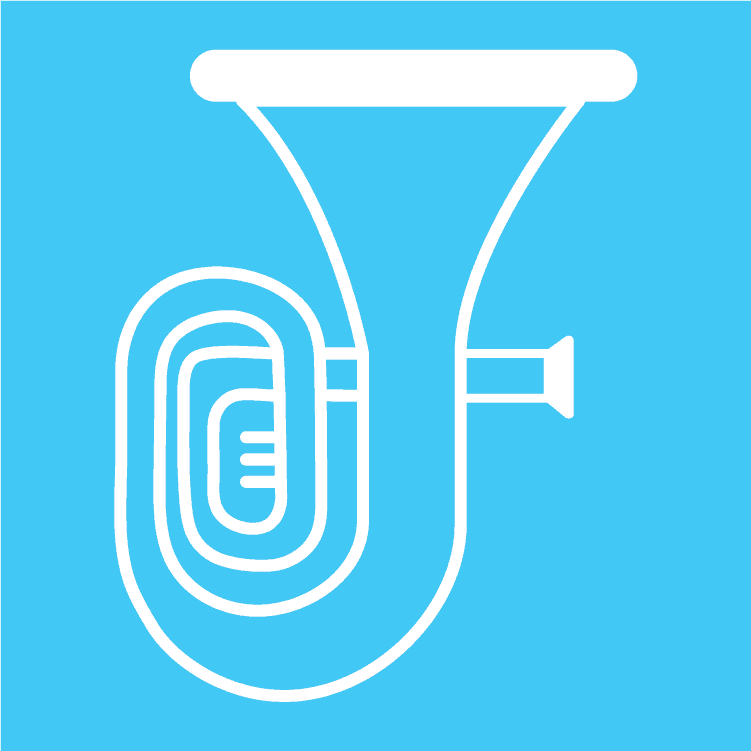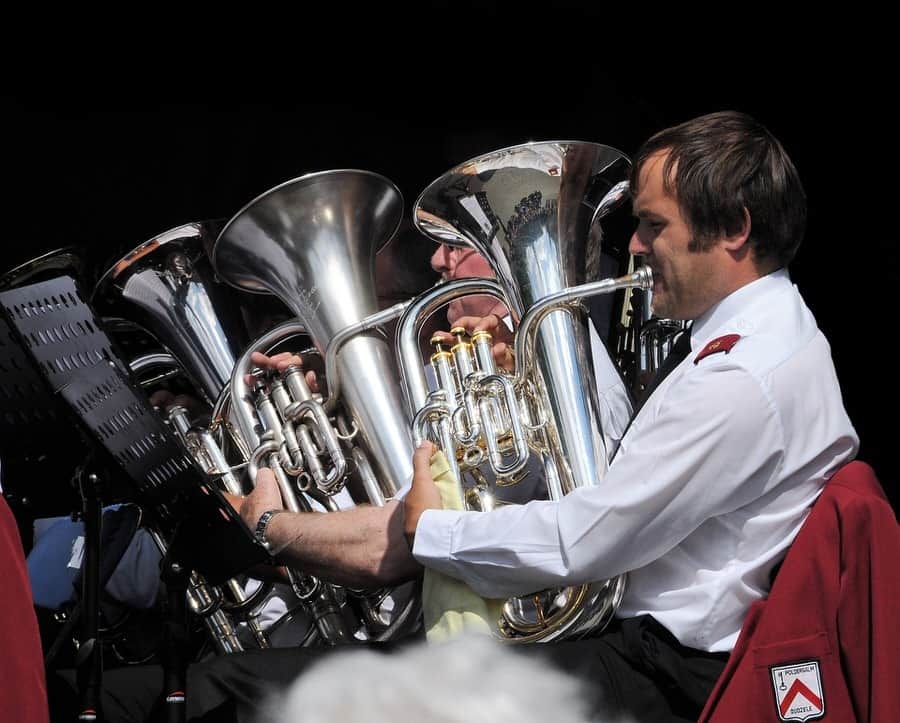Tuba Practice
Fighting to structure your tuba practice?
Just what is the one important thing which can help get your playing to the next level? Practice! Although not just playing the exact same thing again, and again, and again. We have a method to practice efficiently – and within our ‘Beginner’s Guide To Learning The Tuba’, we’ll provide you with the guidelines to make you practice more effectively, not longer.

How Come Tuba Practice So Hard?
Practice. If you do it regularly enough, you’ll be excellent. We all know this. So just why is practice so difficult?
Motivation is key. Without motivation, you will not propel yourself to go back to the instrument day after day. Exactly how do you get motivated?
By winning. Yes, that is what I said. Winning. You are in regular competition with yourself, and when things go very well, you feel like you are winning. When you’re within this mindset, it’s simple to practice. It’s the circle of life – winning much more provides you with more motivation, and that means you practice much more. Practising a lot more usually means you win more, so it provides much more motivation. And this continues exponentially.
So if it’s that straightforward, why is practice still so hard?
The answer? Because it’s not that easy! Just practising isn’t good enough. You might practice for five hours on a daily basis and not improve.
Therefore if it’s not the amount of practice that places you in the circle of life, just what does?
The level of quality.
Practising for fifteen minutes a day, focused, beneficial good quality practice is far more useful than six hours of unfocused, ‘auto-pilot’ practice.
So all you need is a good quality practice to be able to leap aboard the circle of life train?
If only! Nothing is that easy. Incorporate quantity and quality, and you’ll finally be a first-class passenger.
Read more to discover how to get your first-class ticket, and the ways to stay on the train so long as you want…

Structure Your Tuba Practice
How much time should I practice for each day?
15 to 20 minutes is a fantastic starting point and in all likelihood no more than 45 minutes or so at the same time. After that duration, us humans are inclined to zone out – and therefore the practising ends up being much less successful. As a rule of thumb, once you experience your focus waning, stop. Become pleased that you just showed up to your practice session, and don’t be concerned over how long you practice for.
How frequently should you be practicing the Tuba?
This particular one is an easy answer – practice each day. Doing this, you’ll turn your tuba practice into a routine. A short, targeted everyday practice is more beneficial than twice a week 1 hour at the same time. And keep in mind, if you’re wondering “but how will I spare the time to carry out 20 minutes each day? !? ” – just grab some of your time and effort from social media over to the tuba. We all do, after all, dedicate on average 142 minutes on social media daily!
When should you be practicing?
It will make no big difference when you practice, simply just provided that you do practice. Try out developing a fixed schedule for yourself as opposed to simply being ad-hok. Notice which options work best, and adhere to it.
Tuba Practice Top Tips
1. Get rid of All Distractions
This really is your time and energy, therefore you absolutely don’t need anybody annoying you. So you should definitely turn off your tablet pc, laptop, watch, and more importantly, phone, to get as concentrated as you possibly can.
2. Get Relaxed
Cumulatively, you will be spending lots of time at the instrument, so get comfortable. Set up things just how you like them. A glass of water nearby. A pen and paper to make notes. Then like a Jedi Knight, zone in and focus.
3. Establish Goals and objectives
Decide on what you would like to achieve, and make it something you can achieve in the session. By paying attention to the actual end result, you get there faster and more proficiently.
For a recommendation, Monday you could possibly set one objective, subsequently Tuesday one other. Wednesday might be a day of merging your results of Monday and Tuesday. Thursday may very well be one final ambitious aim, with Friday the time of putting everything together. However you assign your desired goals or objectives, be consistent – and more importantly, always be strong with yourself to keep your technique going. As a benefit, ensure that you treat yourself to a box of chocolates or something red in a glass…
4. Become Welcoming With Bad Habits
A habit is something you habitually, or repeatedly carry out. And since we are studying things, most people have a tendency to do them wrong before we do them right. So I know it sounds like common sense, but be sure you aren’t rehearsing your mistakes, otherwise, they’ll become undesirable habits. And everybody knows bad habits are hard to eradicate!
Any time you discover a very little undesirable habit starting to form, say hi to it. Then eradicate it immediately.
Similar guidelines apply for dealing with your technique. Make the hard, correct work at the start – and you’ll save plenty of time afterwards.
5. Don't Shut Your Eyes
You may have driven to a location, and once you arrived, you had simply no recollection or recall about the journey. You drove completely on ‘brain auto-pilot’. A similar thing can take place when practicing the tuba.
Should you practice exactly the same every time, your progress will slow, your enthusiasm will shrink, and the tuba will turn out a laborious task. You can actually overcome this tiny gremlin by switching your practice strategies.
There are many solutions. Close your eyes to play. Try out playing the piece backwards. Consider standing up or sitting down. Play whilst using earphones. Play everything gently, or even loudly. This list goes on and on. The invention is the name of the game, and whatever you decide and do, don’t get bored!
6. Become Your Own personal Teacher
We have a good reason most of us go to school; and it’s because we learn best when we have a teacher standing over us, encouraging us to advance. But unless you are the Founder of Microsoft, you’re unlikely to be able to find the money for a teacher 365 days of the year. Does it matter? Absolutely not! You are your personal instructor – and you come totally free!
To start with, quickly learn how to hear. A lot of people forget to actively listen, but it’s the easiest method to boost your playing.
Subsequent, using the wonders of modern technology, it’s now incredibly easy to record your playing. So get your smartphone out, record, and critique yourself.
And even if the world’s richest people wanted to hire my own tutor, they couldn’t afford it!
7. Starting From The Beginning
It feels right to start a piece at the beginning. The issue is if you do that each and every session, your first few notes will sound wonderful, but still become disproportionately practiced in comparison with the remainder of the piece. Mix it up. Start off at the end! Or in the middle! Or shut your eyes and randomly choose a section. Just don’t always start from the beginning!
8. Don't Always Have Fun With The Simple Sections
It can feel excellent to play parts we know well. However, if that’s all you ever play, you’ll have half of the piece to a fantastic standard, and the more difficult half will be a disaster. And yes, you’ll naturally get attracted to the straightforward parts, which results in the challenging bit out in the cold. All alone. Shivering for some heat and love.
Think logically now; which sections do you need to learn first? Yes, that’s correct. The difficult sections. The simple bits will sort themselves out.
So don’t overlook this. Go discover that complicated aspect and warm it up…
9. Don't Perfect The Piece
One of the best techniques you can discover is sight-reading. But what exactly is sight-reading? It’s performing anything that is put before you, instantly and without hassle. The aim isn’t to be perfect. It’s to get through it as best as you possibly can whilst trying to keep the beat.
10. Your Metronome Is Your Friend
Your metronome is there not as your foe, but as your friend. So make sure to use it!
For parts that happen to be really fast and difficult, the metronome can be an excellent device. Set it up at a nice and effortless tempo, which you can have fun playing the part correctly. Then on a daily basis, notch up the tempo by a little. Eventually, you’ll end up being at performance speed, and it should really feel as comfortable as whenever you commenced at a slower tempo.
And right here is a bonus word of advice – always try to overshoot by 10%. If you want to be at 150bpm, make sure you can play it at 165bpm – that way 150BPM will appear easily achievable!
11. A Bottle Of Red
Did you recognize in point number three that I described a reward? Well, I do think it’s very important I’m talking about it twice! Be sure you make it rewarding…

Tuba Exercises
Exercises are a necessary evil. We have to do them in sports to warm-up, and playing the tuba is absolutely a sport for your fingers (and mind). There are many different exercises that strengthen your embouchure and playing in general, but remember that the main ones are:
Studies
THE ARNOLD JACOBS WARM-UPS AND STUDIES
KOPPRASCH STUDIES
BORDOGNI STUDIES
MULLER TECHNICAL STUDIES
RINDERSPACHER STUDIES
All pretty old school, but they have given Tuba players success over the years for a reason!
Scales
Yes, I know they can be more boring than watching a politician talking about the budget – but they are important. And they do their job well. So yes, you do need to do them! Borrow rhythms of your pieces and place these on each step of the key the piece uses. Killing many birds with one stone is a great approach.
TOP TIP!
Repetition of good habits is a great friend of your progress! For tricky bars of music, in particular, place the rhythm of the bar on the notes of the bar. For example, if a bar has 12 notes in it, the rhythm will contain the same number of sounds. Placing these 12 sounds on the 12 pitches as accurately as possible will unlock so much you thought was difficult.
This approach reinforces our understanding of the rhythm as well as the placement of the pitches. It also gives us time to understand and ‘feel’ where each pitch lives. Do whatever you can to make the music slightly trickier by playing games. That way, the music will feel easier when you return to what the original and solved problem was.
Long-distance runners use the same trick. They run with weights or water bottles in a rucksack. On race day, not having those weights makes their challenge much easier too.
Tuba Practice Bonus Tips
1. Organise your breathing!
Knowing where to breathe is vital. If you just guess where to breathe, you may play something very accurately purely by accident. You will then be really puzzled when you cannot play a piece very well the next day. ORGANISE YOUR BREATHING! Mark it in your music with little ticks. Erase breath marks, change them but never ignore!
2. Make Your Tree Stronger
Your brain learns each and every time you choose to do something totally new. It makes a neuron, just like a very little branch of a tree. Each and every time you repeat the very same thing, with absolutely no differentiation, that branch gets a little stronger. If you do the task enough times, in precisely the same manner, that branch becomes a strong arm. This is basically the factor where your body and mind can accomplish something ‘without thinking about it’.
Alternatively, every time you adjust something, a new branch is established. In the event, you play the very same passage of music 4 times, and each time you start using a different fingering or are not completely consistent, you’re producing four branches.
So is that a concern? Yes! A branch is a choice. Once you come to a performance and reach the relevant segment, if your brain has a choice of many different neurons to select from, it can opt for the wrong one. It could possibly opt for the one that includes a blunder inside. For once, the choice isn’t a good thing. If you have just one single neuron that is definitely accurate, the brain offers no alternative – it has just one solution – the best one.
So, become consistently correct from the very first time of performing something. Discover things at a tempo you are able to perform well. And take note of your neurons!
3. Recommended Reading
Here are some great books that really helped me when I was starting out and I regularly recommend them to students to this day.
Music Practice: The Musician’s Guide to Practicing and Mastering your Instrument like a professional
I also highly recommend you include How to Read Music in 30 Days in your must-read list. If haven’t already read our guide on How To Read Tuba Sheet Music, then do check that out as well.

tuba Practice - Summary
Should you have discovered one thing within this page, it has to be:
Don’t leave practice to chance. Structure it. Get mindful and never go on ‘auto-pilot’. Shorter is absolutely sweeter. Print off the list and look at it at the beginning of each week. And most importantly, get that corkscrew prepared…
About the Author
Carl Woodcroft
Carl has performed with orchestras including the Orchestra of the Royal Opera House, Covent Garden. He has recorded with Bastille at Abbey Road Studios, played at Glastonbury and the BBC Proms. Carl studied at the Royal Academy of Music and has also performed for The Queen. Interestingly, he has appeared in film and TV as a musician in The Ipcress File remake, Military Wives and Mission: Impossible – Rogue Nation. Carl teaches at Royal Holloway University, Highgate School, Surrey Arts and as a visiting guest at Junior Guildhall.
Other posts by this author
Will You Be Experiencing 4 Feature Friday?
Each week, on a Friday, I mail out the four Feature Friday email. It’s a simple idea that is made up of 4 brilliant things I”ve discovered that week.
On condition that it has something related to music, it can end up in the e-mail. Consider it a music pandora’s box!
Enrol in the 4 Feature Friday subscriber list, simply by pressing below.
Read the next post in this series:




